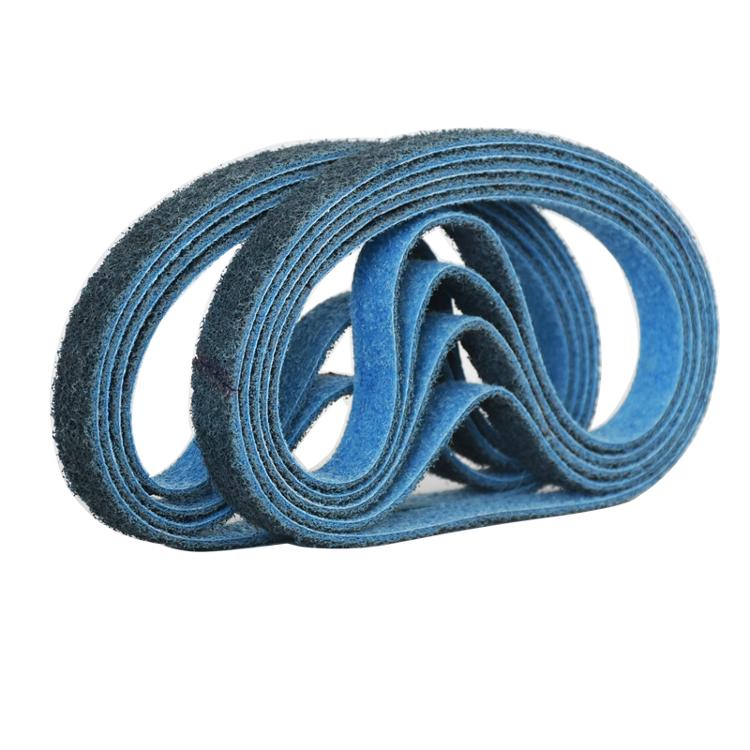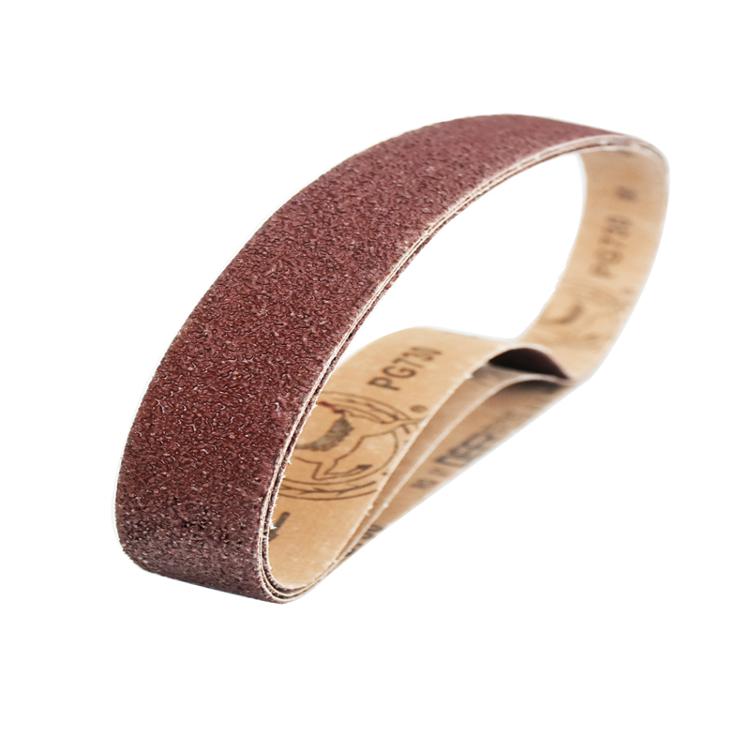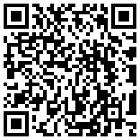
Abrasive belt grinding attentions
Abrasive belt grinding has two basic applications, namely lightweight grinding and weight grinding. Lightweight grinding removes very little material and can only be used for surface pre-machining or workpiece finishing, such as polishing, deburring, etc., and the belt grinding speed is faster when performing light grinding. The weight grinding has the effect of coarse and fine machining on the workpiece, which has the advantages of high cutting rate and low cutting heat. ‘The workpiece has small deformation and easy to control flatness and surface roughness.
Contact wheel grinding and free-grinding are two major processes for abrasive belt grinding. The former is suitable for rough grinding, semi-finishing and fine grinding, while the latter is also used for semi-finishing and fine grinding, but mainly for polishing. effect.
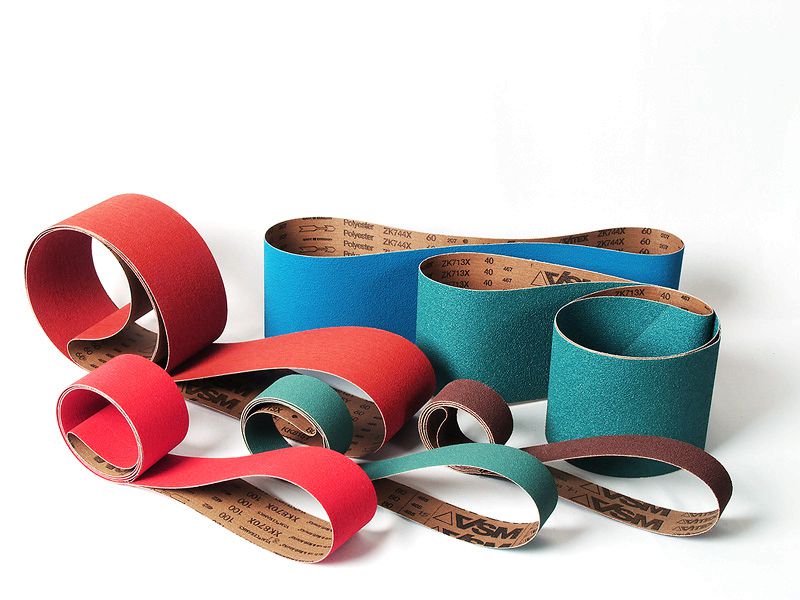
abrasive belt_abrasive belt grinding_sanding belt manufacturer
Abrasive belt grinding can improve machining accuracy, and it is controlled by profiling and fixed-length machining. The profile control is to use the master model to properly control the feed rate in the tangential direction during grinding to a certain range, so that the workpiece is ground corresponding to the master model; the fixed length processing is based on the variation of the workpiece width and the machining allowance. The feed rate of the workpiece is appropriately controlled, and the normal grinding resistance is controlled to a certain level, and the grinding residual amount is maintained to a certain value (not a zero value).
Belt grinding should pay attention to the following matters:
(1) When grinding the deep abrasive belt, since the contact wheel is elastic, the feed depth is different from the actual depth, and the ratio is about 3:10.
(2) The initial grinding position of the new abrasive belt is more than that of the old abrasive belt. Therefore, the initial grinding position of the new abrasive belt cannot be fixed, but the initial feeding is required to be rotated from the left and right ends of the workpiece to avoid taper of the workpiece. The geometrical accuracy can be improved by measuring the outer diameter frequently, identifying the largest outer circle, from which the new abrasive belt is initially fed, or repeatedly grinding there.
(3) The use of non-feed grinding to improve the surface roughness of the workpiece, in the final grinding can be used without a knife back and forth 3-4 times, the effect is very good.
(4) Machining allowance The general abrasive belt grinding machining allowance is 0.04 to 0.08 mm. When the surface roughness value before grinding is higher than Ra2.55m, the machining allowance can be slightly more. The surface roughness value before polishing is Ra 1.255m-RaO.635m, and the machining allowance is 0.01-0.02mm.
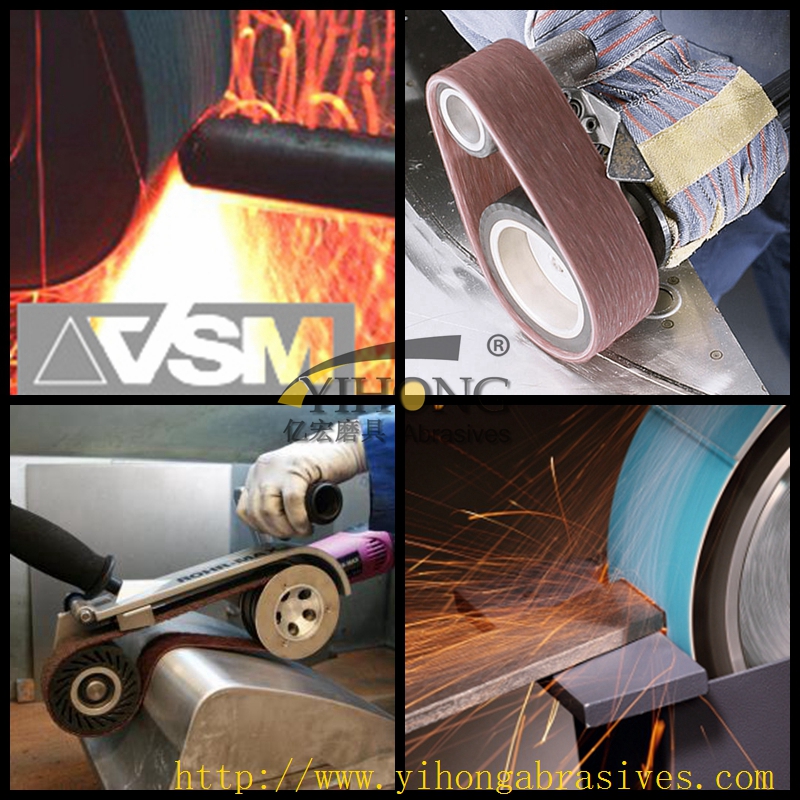
abrasive belt_abrasive belt grinding_sanding belt manufacturer
In addition, since the abrasive cutting edges of the new abrasive belt are sharp and vary in height, only a part of the cutting edge works, which affects the roughness of the surface of the workpiece. Therefore, the abrasive belt must be trimmed to process all the cutting edges. There are two kinds of dressing methods: 1 wrapping the old sand belt on the round bar, holding the wooden stick by hand, and grinding the new abrasive belt rotating on the contact wheel, then the force should be appropriate; 2 in the semi-finishing In the process, the selected new abrasive belt will be subjected to the grinding work, and the cutting edge will be slightly blunt, and replaced for final fine grinding.
abrasive belt | Zirconia Alumina Abrasive Belt | Compact Abrasive Belt | Silicon Carbide Abrasive Belt
Copyright ©Henan Sanders Abrasives Co.,Ltd All Rights Reserved. Technical Support By Yihong Century Network Technology Co., Ltd. Sitemap

 Henan Sanders
Abrasives Co.,Ltd
Henan Sanders
Abrasives Co.,Ltd




